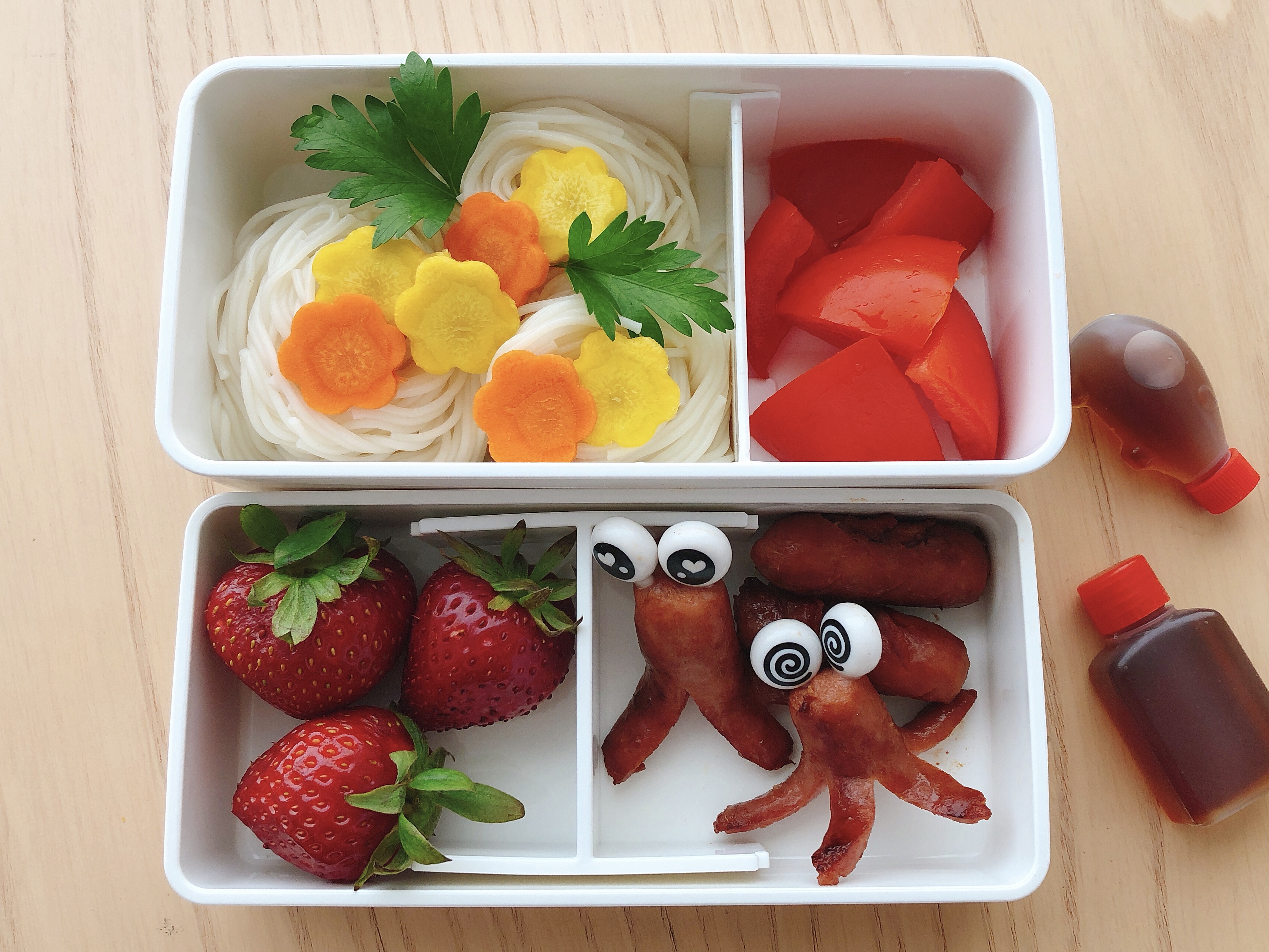How to Make the Best Bento: A Guide for Kids
I have a picky eater grandchild and it’s always a struggle to find him something for lunch. So I decided to let him make a bento lunch. An empowered child is likely to make the best bento, since he would customize it to his taste.
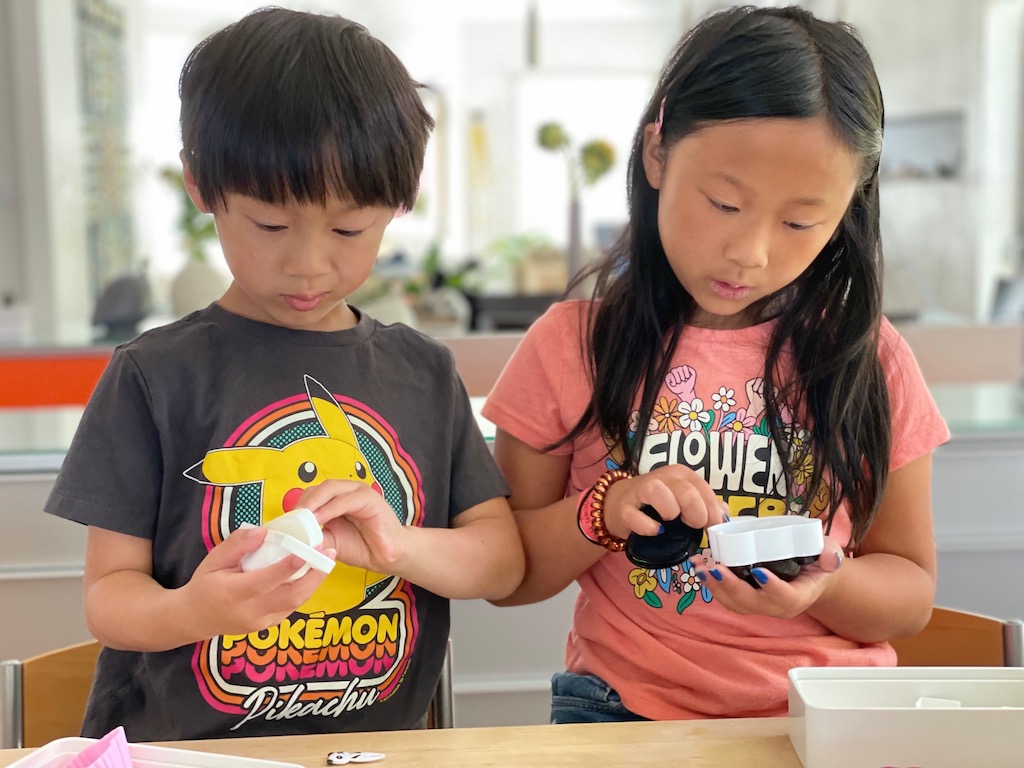
Normally, when the kids are visiting, we’d just have a sandwich, a glass of milk, and a piece of fruit. By bringing out the bento paraphernalia lying fallow in a kitchen drawer, lunch was turned into a fun, interactive activity. Kids had a say in what they’d eat, and could express their creativity in their choice of food and decorations.
More bento-making tips.
Of course we need kawaii bento–they had to be super-cute. So that means, cutting up things in diminutive pieces and using vegetable cutters to create pretty shapes.
If you don’t have bento boxes, for the purpose of this summer activity, use shallow cardboard boxes, such as a candy boxes. Line with plastic wrap, waxed paper, or foil. Tape in place, as needed.
Food Picks for Instant Cuteness
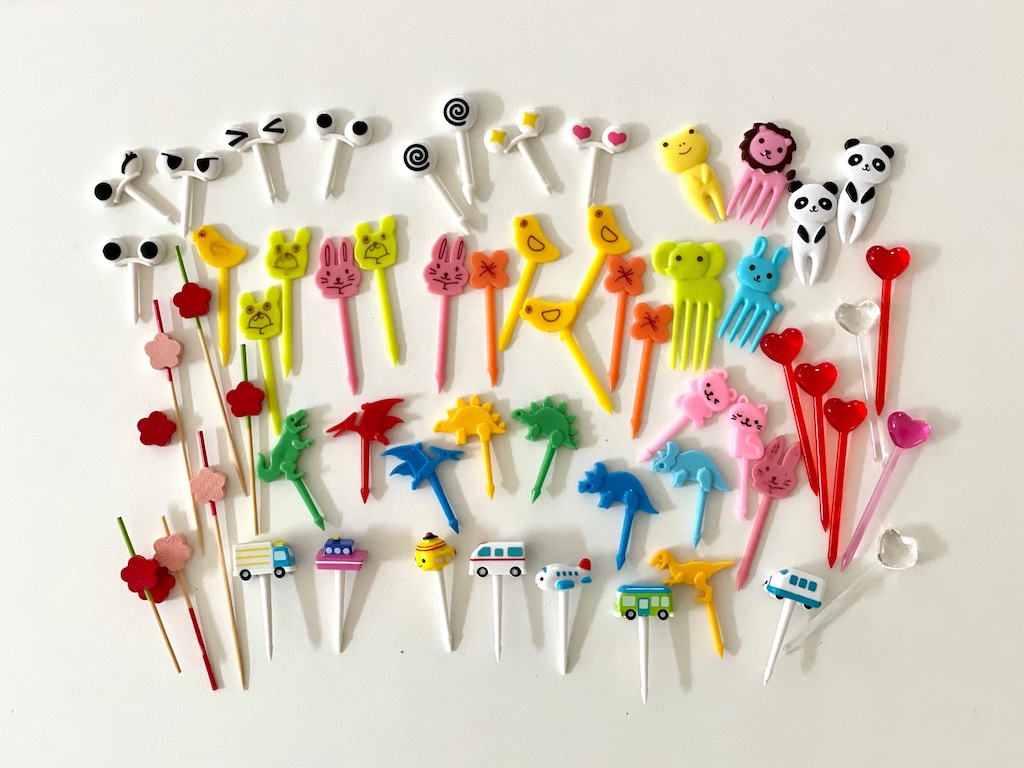
I have a good collection of bento picks for kids. You can find such picks easily in many Japanese specialty stores, as well as online on Amazon, Etsy, and Japanese export websites.
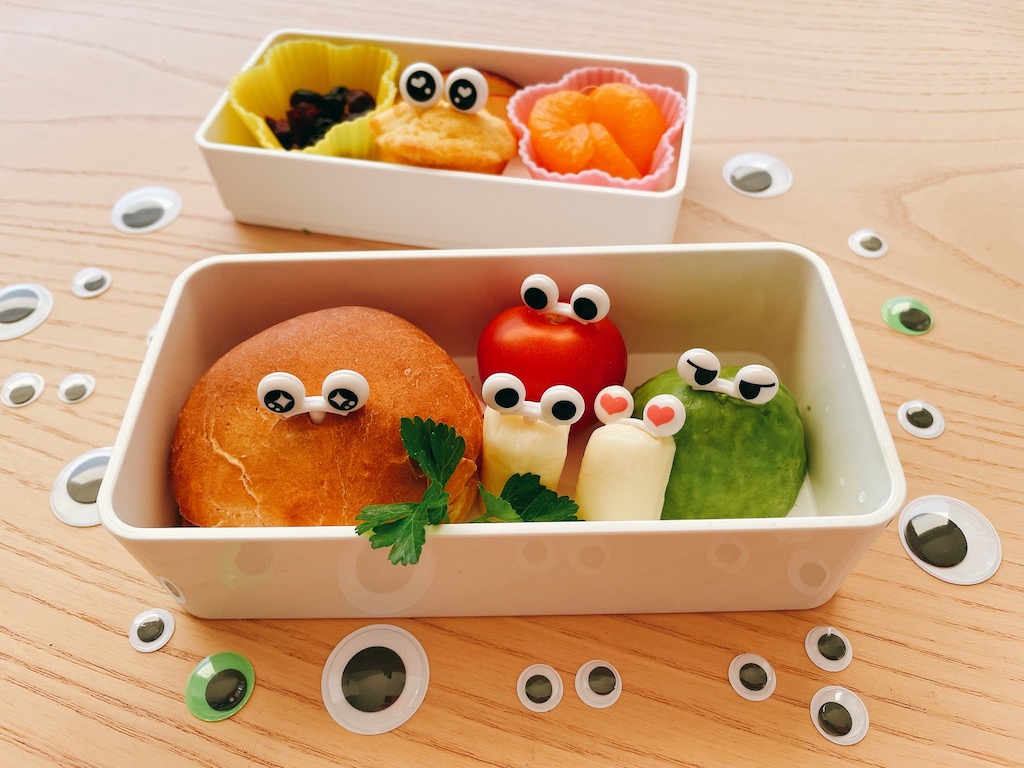
Making the Best Bento Sandwich
For a sandwich, use soft bread and cut out shapes with a cookie cutter. What’s nice about cookie cutter sandwiches is you can use different shapes for different occasions, such as a heart-shaped cookie cutter for a Valentine’s Day sandwich and a turkey for Thanksgiving. Simple shapes will cut best.
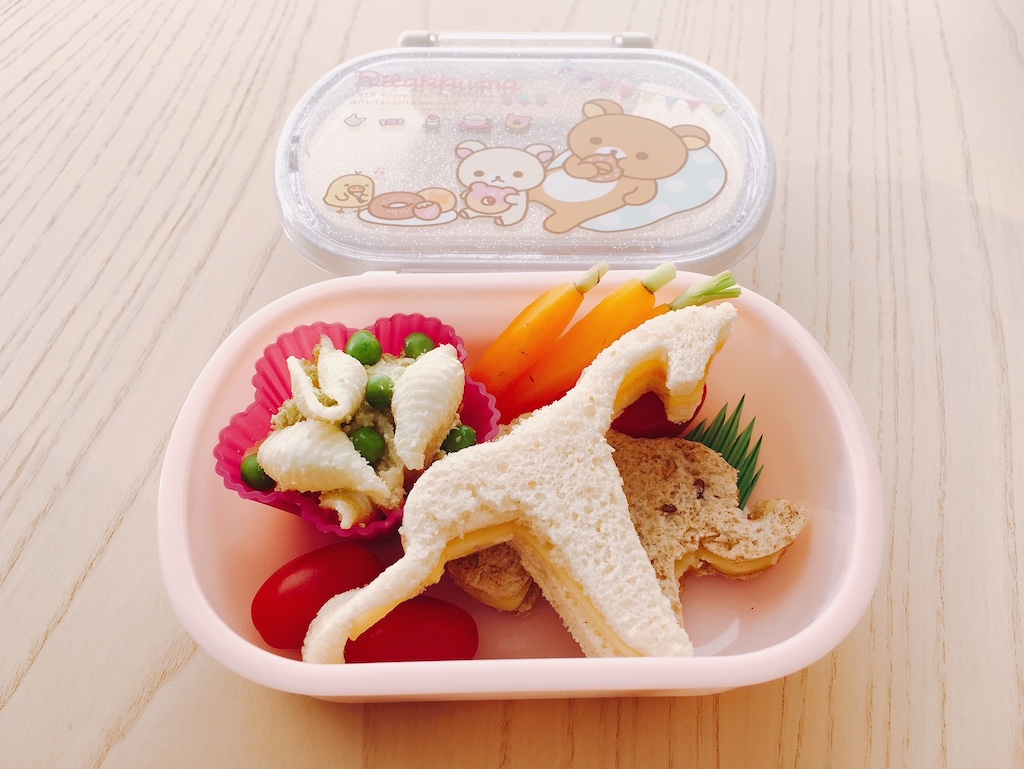
You can also use a cookie cutter on a grilled cheese sandwich. I make grilled cheese sandwiches using an electric panini press, then the kids can cut out a shape afterwards. The toasted bread is harder to cut through so kids may need some help.
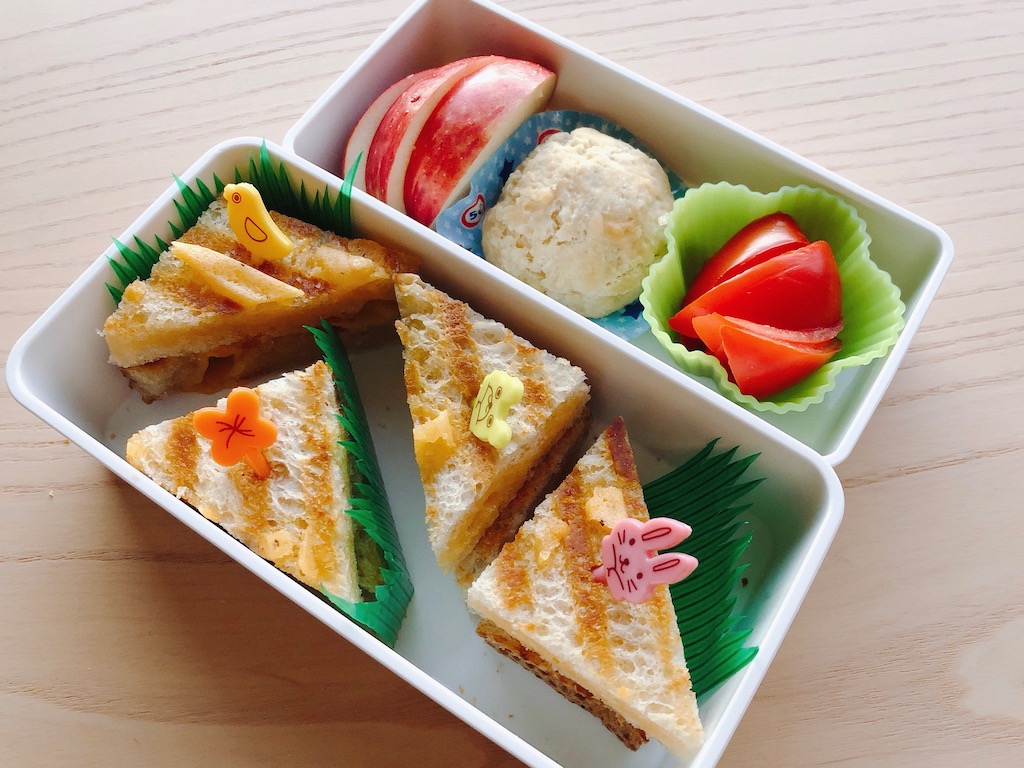
If you don’t have cookie cutters, simply give the child a table knife and have them cut the sandwich in triangles or strips (soldiers). Sometimes, when I make Little N a PB&J, I cut the sandwich into small rectangles, like building blocks, and let him play with his food by stacking up the blocks in different configurations before consuming. He’s more likely to eat the entire sandwich that way.
Vegetable Cutters for More Cuteness
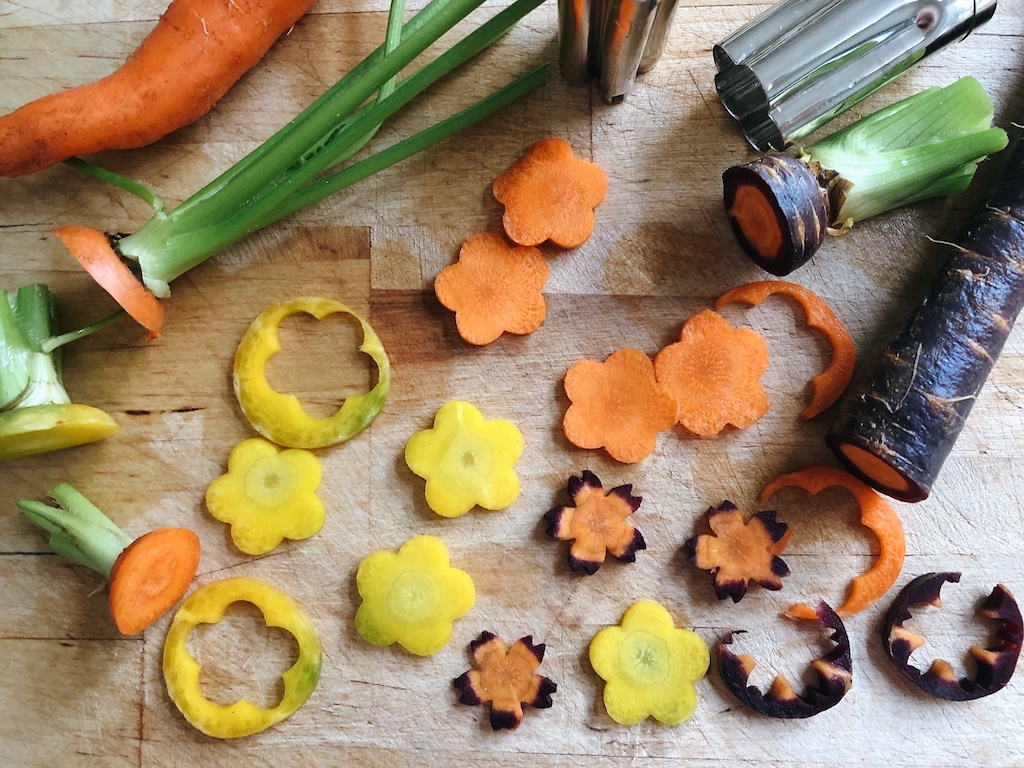
Vegetable cutters in flower, leaf, and other shapes can be used to add color and make vegetables more appealing. You can use the cutters for cheese, too.
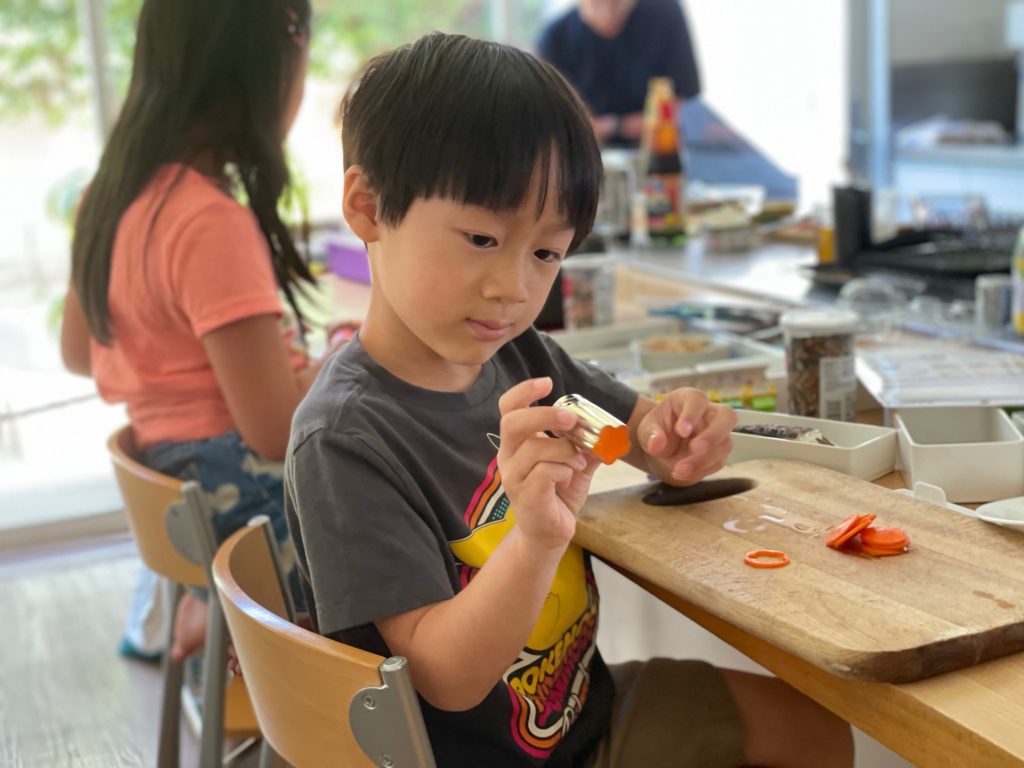
Onigiri, Japanese Rice Balls
If you’re Japanese, you probably know this one well: rice balls are the foundation of many a bento. If you’ve never made onigiri, but would like to try–and if your child likes rice and nori (dried seaweed sheets) already, this is a winner.
You can find onigiri molds online and in stores that carry Japanese kitchenware. Nori is available in most stores, such as Safeway, Whole Foods, Walmart, and Target
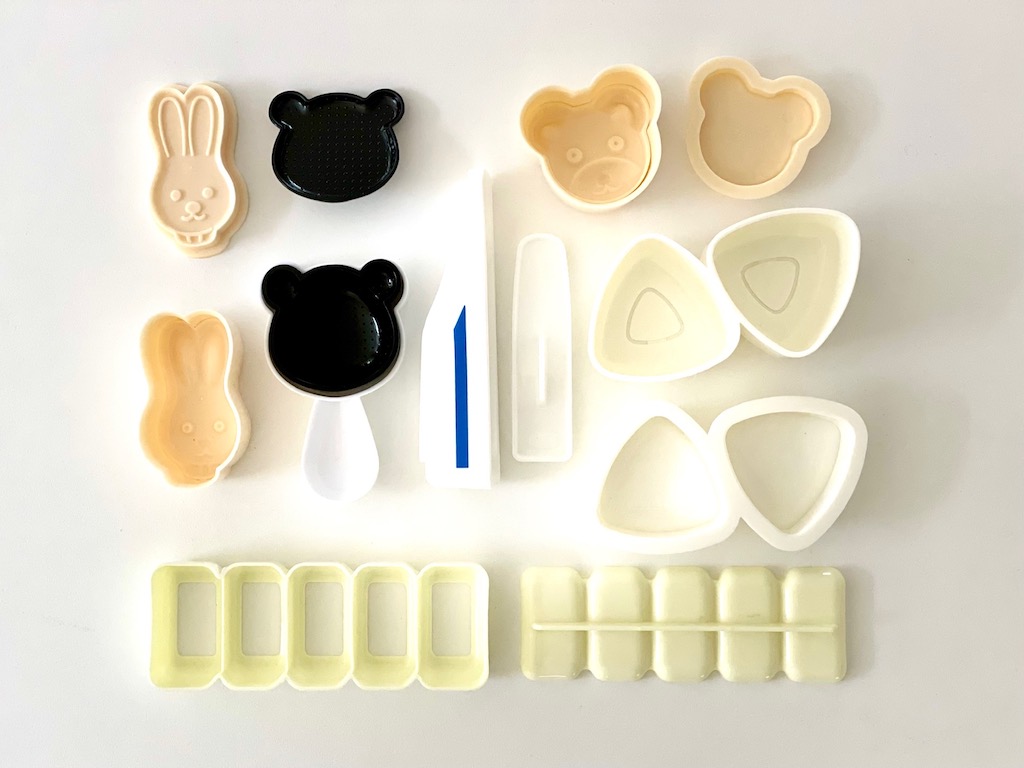
If you’ll take the time to cook some rice–a snap if you have a rice cooker–it opens the door to all sorts of possibilities. The onigiri molds don’t tend to have English instructions, but often, there are pictures on the packaging so you can figure it out.
Some molds come with plastic stencils so you can punch out features like eyes, noses, and mouths from nori sheets. My bullet train (shinkansen) mold comes with stencils for windows, head lights, and train engine decorations.
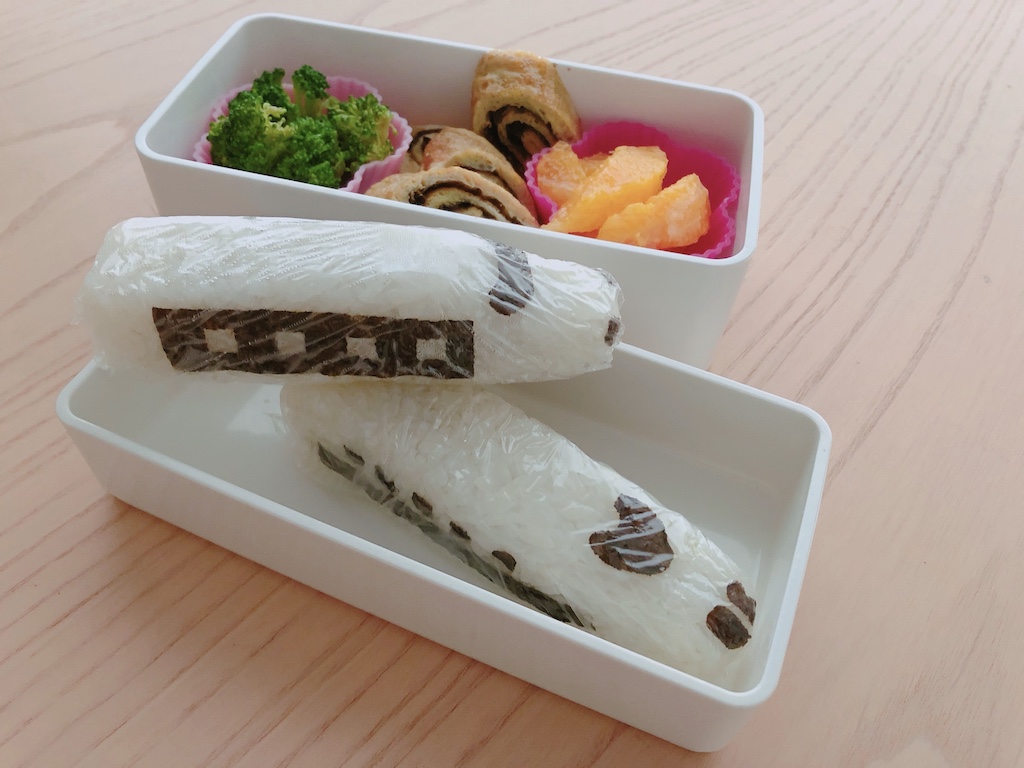
To make onigiri, using an electric rice cooker, cook some Japanese short-grain rice; other types of rice aren’t sticky enough. If you don’t have a rice cooker, follow my instruction for cooking rice on stovetop in the Japanese manner.
When the rice is done, and while it is still hot, fill the onigiri mold halfway, make an indentation with your finger and add filling of your choice in the indentation. Then fill to the top with rice. Put the onigiri mold cover on top and press gently, but firmly, with just enough pressure to help the rice hold its shape. Remove the cover and unmold the onigiri.
Your hands will get sticky, so keep a small bowl of salted water ready and wet your hands before you start; clean off the rice from your fingers by dipping them in the water bowl as you work.
Some Simple Onigiri Fillings:
- Drained canned tuna or salmon mixed with mayonnaise
- Small cheese cubes or shredded cheese
- Katsuobushi (dried bonito flakes; looks like wood shavings) mixed with a little soy sauce
- Tofu crumbles–crumble firm tofu and fry in a little oil, then season with soy sauce and mirin
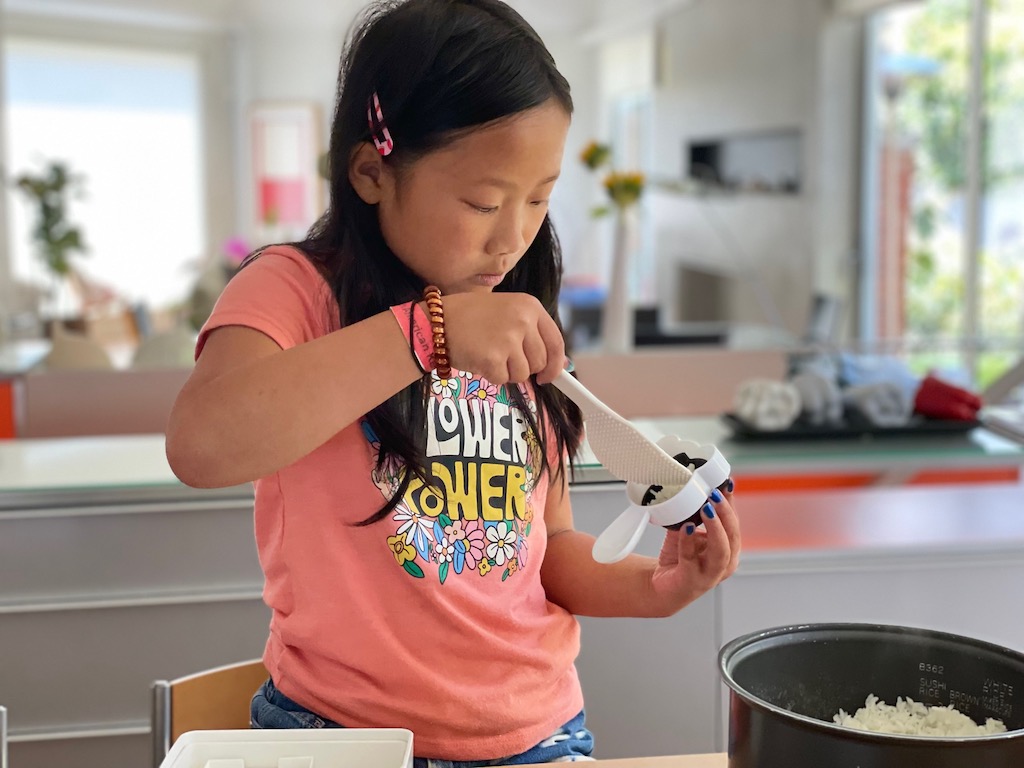
Go-Withs for the Best Bento
Here are some suggested accompaniments for your bento:
- Edamame
- Vegetables such as cucumber, carrots, or radishes cut with a pretty vegetable cutter
- Cherry tomatoes
- Steamed broccoli or cauliflower florets with mayo for dipping (Japanese mayo preferred)
- Orange segments, strawberries, or other fresh fruits in season
- Raisins, dried cranberries, or other dried fruits
- Omelet
- Boiled egg, cut around the horizon with zig-zag cuts using a paring knife to make egg flowers
- Cheese sticks or string cheese
- Fried Spam slices
- Hot dog or cocktail sausages, browned in a little oil
- Ham or salami slices rolled into cornucopias
The Grandkids’ Bento
Each child designed a wonderful bento. I didn’t have any other bento-ready meat, so I fried them some Spam. Having grown up in Hawaii, we often had Spam in bento lunches. I don’t know what you may think of Spam, but those of us from Hawaii know it’s convenient, shelf-stable, and holds up well, unrefrigerated in the bento box, until lunchtime.
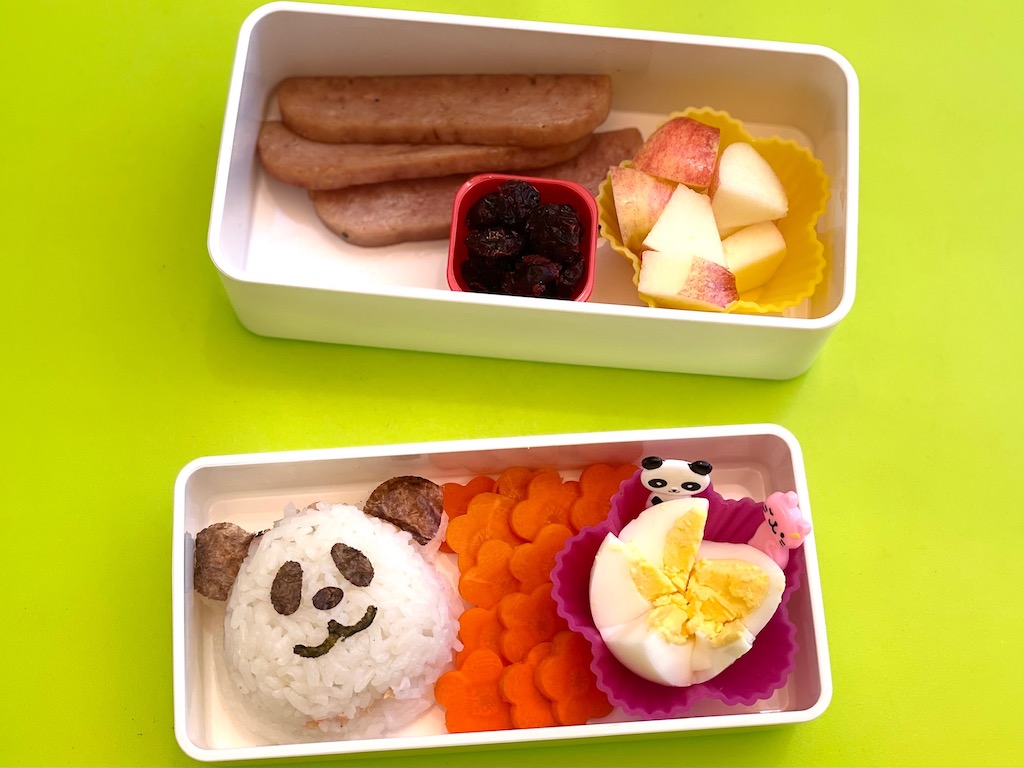
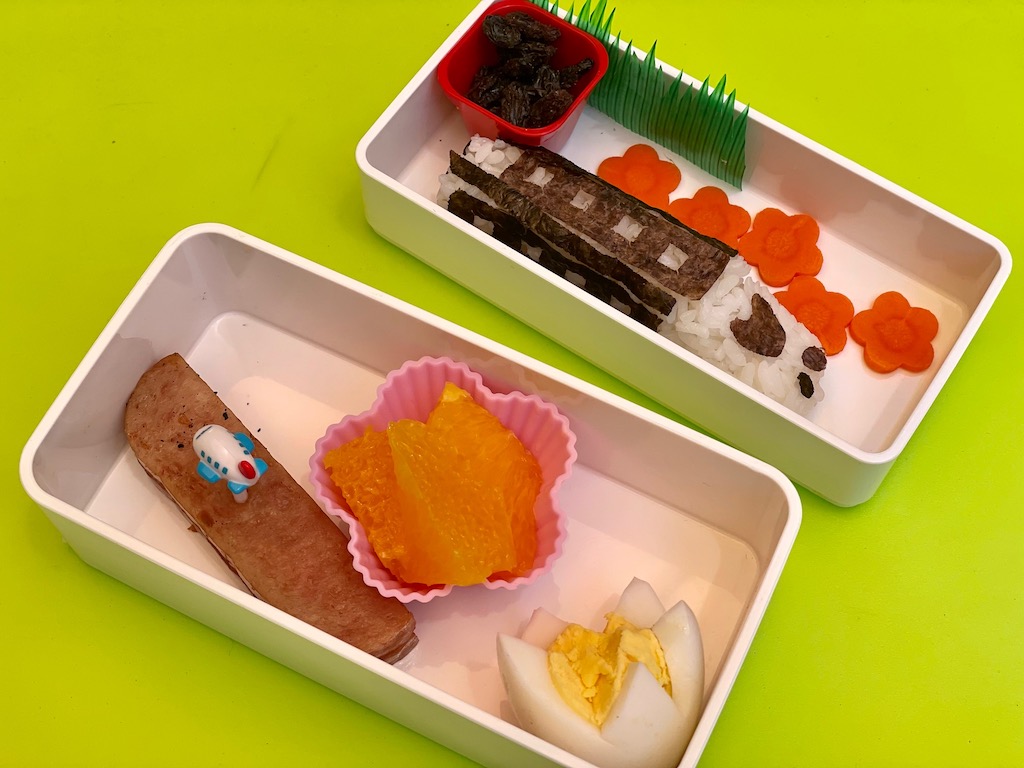
The beauty of having kids make their own bento is that they get totally immersed in the process. It’s a fun cooking activity, an outlet for creativity, and a bonus: you don’t have to make lunch!
Of course there is some adult support involved, such as cooking the rice, cutting anything that requires a sharp knife, and so forth. But most of the time will be spent by the kids designing their bento lunch.
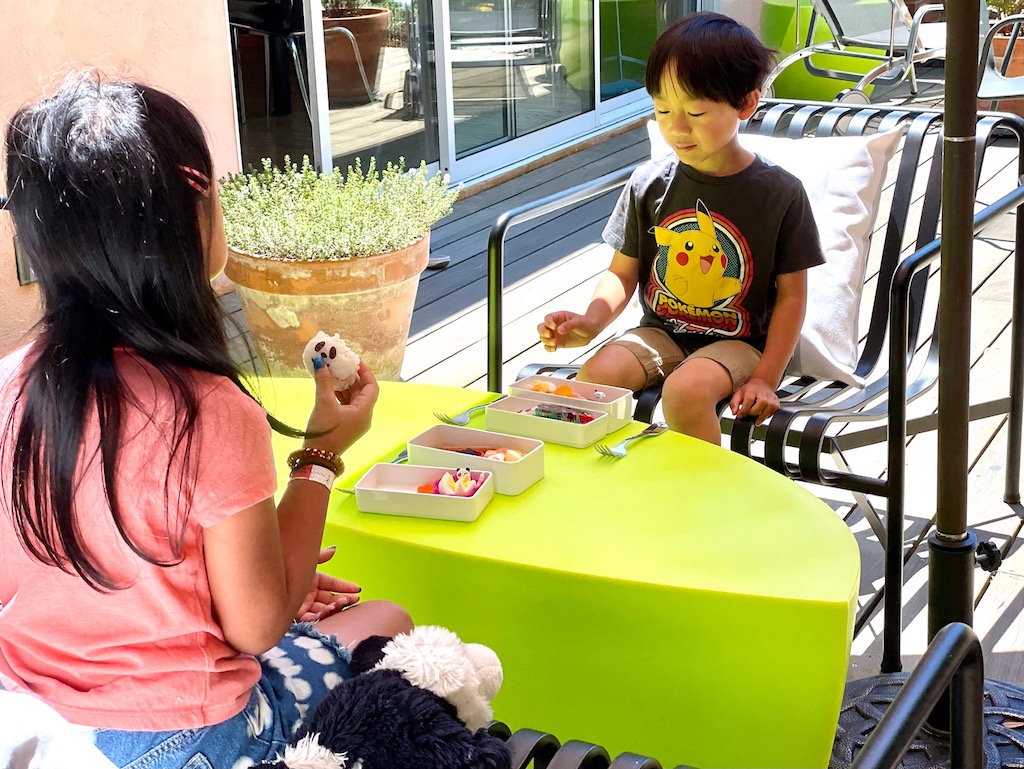
Bento for Back-to-School
I used to make each child a bento lunch every Friday that they would pick up on the way to preschool. The reason I volunteered was to try to motivate the picky eaters. (Miss T has outgrown that phase.) I would wake up at 6 o’clock in the morning to have lunch ready by 8.
Part of that time involved decorating the two-tier bento box and photographing it for Instagram. Since the stacked boxes could come apart when jostled in backpacks, I would tie the tiers together with raffia or ribbon like a present, and add a different decorative element each week.
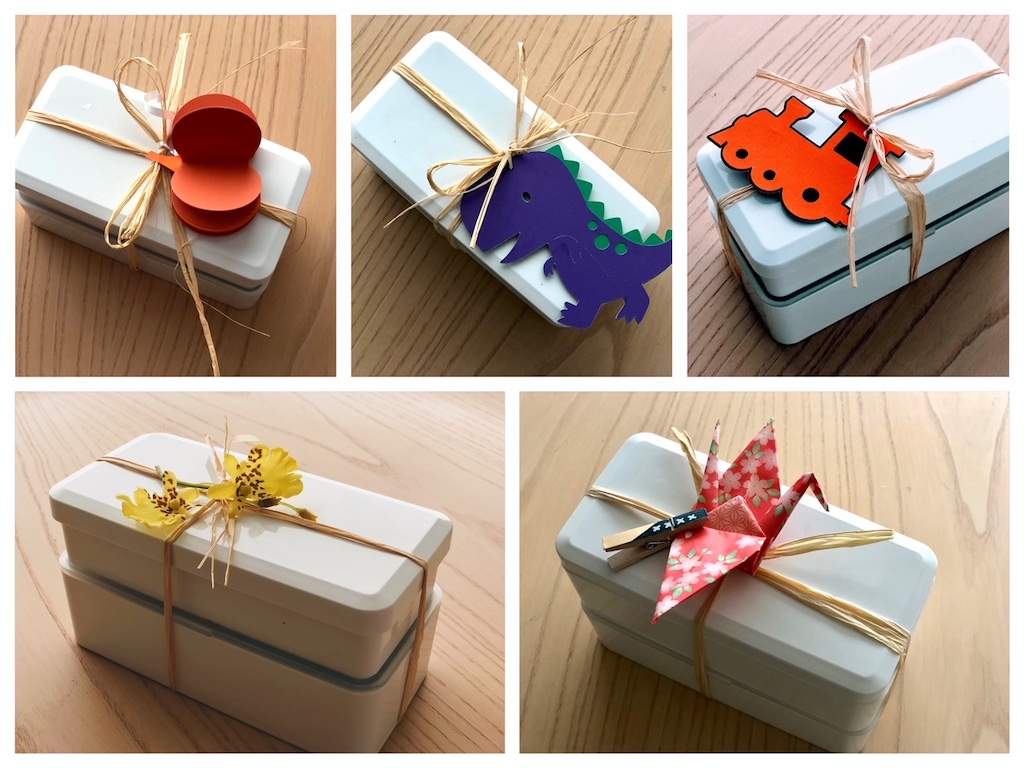
Making bento school lunches doesn’t have to be as time-consuming, of course, if you prep in advance, and work your dinners around having leftovers for the bento the next day. Good leftovers candidates include cooked vegetables, pasta salad, pizza, steak slices, and meatballs.
And no, you don’t need to go crazy to decorate the bento boxes. That’s just me.
Sign Up!
Don’t forget to sign up for my email newsletter. Every Wednesday, I’ll give you a new idea for an activity or insight to nurture the little ones in your life.
